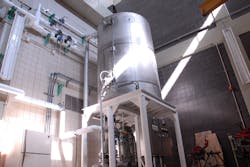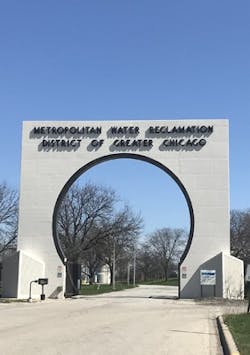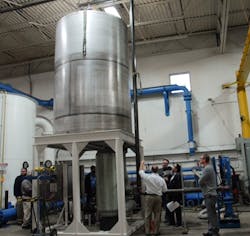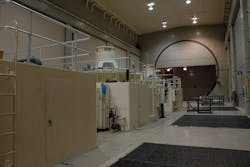Pumping Station Helps Reservoir Ensure Safety of Chicago Water
When everything is working smoothly with a water system, whether that system is delivering potable water or removing wastewater or storm water, few people give any thought to what is taking place. When something goes wrong, however, the entire story changes and the complexities of a properly functioning water system become increasingly important to everyone involved. Some of these systems, especially residential systems, are fairly straightforward. Others, such as the massive Metropolitan Water Reclamation District of Greater Chicago (MWRD), are much more complex. The engineers and designers at Metropolitan Industries do not shy away from either.
Their expertise regarding pump system hardware and software allows them to seamlessly scale and customize to meet just about any project. However, when the number of gallons stretches into the billions, scaling up is no small feat, and exhaustive testing prior to installation helps minimize risk and understand performance.
An Ongoing, Special-Purpose Project
The MWRD was established in 1889, a few years before the World’s Columbian Exposition, as a government agency responsible for treating used water and managing storm water over 375 square miles. In 1972, MWRD adopted the Tunnel and Reservoir Plan (TARP) to help the district comply with state and federal water quality standards, including the Clear Water Act (CWA), in Chicago and 51 suburbs. TARP was designed to protect Lake Michigan from raw sewage pollution, especially during times of heavy rain and flooding, by directing the flow of this water into reservoirs where it could rest until treatment facilities had the capacity to properly treat it.
Underground Expertise
Metropolitan knows pumps of every size and understands that continued operation is critical to the success of a system, especially one the size and significance of MWRD. To begin, the company first had to understand the end goal of the larger McCook Reservoir. Upon full completion in 2029, the reservoir will have a total capacity of 10 billion gal achieved in two stages, with the first stage offering 3.5 billion gal of storage capacity to protect Chicago and surrounding areas. Metropolitan worked directly and closely with MWRD to design the Mainstream Pumping Station non-potable water system with an air-gap break tank for seal water for the deep-tunnel pumps. However, design was only part of the challenge.
Successful completion of this project—which saw its inaugural and successful flood of water in January 2018—involved two separate, but closely related components:
- The hardware. The project required the installation of piping, valves, electrical conduits and wiring, in addition to tanks and pumping equipment. The main tank components were three 304 stainless steel (known commercially as 18/10 or 18/8 stainless steel) break tanks with baffle walls and 304 stainless steel piping. Every component was American Iron & Steel (AIS)-compliant. End suction booster pumps, each with 7.5 hp and 140 gal per minute (gpm) at 52 psi, were used and supported by variable frequency drives (VFDs) and a hydro-pneumatic tank for low-flow pump shutdown. City Water Supply fill valves with provisions for the future completed the system.
- The controls. The MetroTech III variable speed water booster pump controller was designed into this project because it provides operators with the ability to view real-time operating conditions and alarms. Set and command points can be changed, and the integrated help screen provides easy access to assistance as needed. To help everything run as smoothly as possible, the controller is intuitive and offers real-time troubleshooting to the team of experts tasked with monitoring and maintaining the mainstream pump station.
To help ensure that the system would work as planned, Metropolitan opened its facility to representatives from MWRD so rigorous testing could be conducted with all interested parties.
Testing Makes Perfect
The experts at Metropolitan’s Romeoville, Ill., facility are well versed in testing, and the facility itself features extensive testing capabilities that were enhanced in 2017. For large projects, full system testing greatly reduces startup time and decreases the potential for errors—meaning added costs and downtime—after installation.
The onsite test lab was designed to perform a full range of testing on all of Metropolitan’s equipment. Testing capabilities include hydrostatic pressure, hydraulic performance and hydronic equipment performance testing on both individual items and large packaged or custom assemblies. Newer additions include automated testing with programmable logic controllers, actuated throttling valves, calibrated instrumentation and, as the MWRD team learned, witness testing with customers.
[Visit Metropolitan Industries' WWD Storefront]
With every product Metropolitan sells and every project it takes on, the end goal is to have a satisfied customer, regardless of the size of the project itself. In the case of the MWRD McCook Reservoir and Mainstream Pumping Station, millions of Chicago area residents will count on this reservoir in times of need, and the company is happy to have had the opportunity to extend its expertise to them.



